

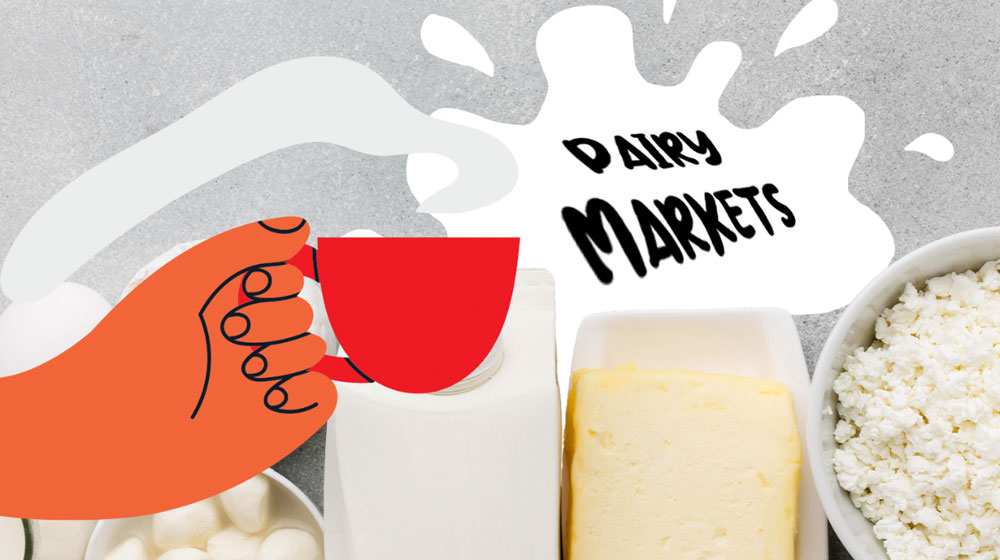
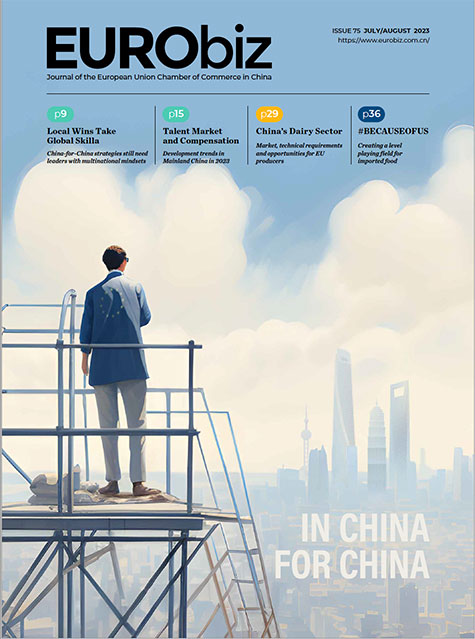
The following article by EU SME Centre Business Advisor Alessio Petino was published in EURObiz, the bimonthly magazine produced by the European Union Chamber of Commerce in China.
The July/August 2023 issue 75 of EURObiz, “In China, for China”, explores how multinational companies (MNCs) operating in China have had to adapt along with the changing business environment in order to be able to compete.
Read EURObiz online here: https://www.eurobiz.com.cn/
The average dairy consumption per capita in China is significantly lower than in the EU or other markets, but it has been growing significantly compared to previous years, driven by two main factors:
The Chinese dairy market is extremely competitive; market players are constantly changing while bigger brands are solidifying their positions in many segments. Three main trends can now be identified in China’s dairy market.
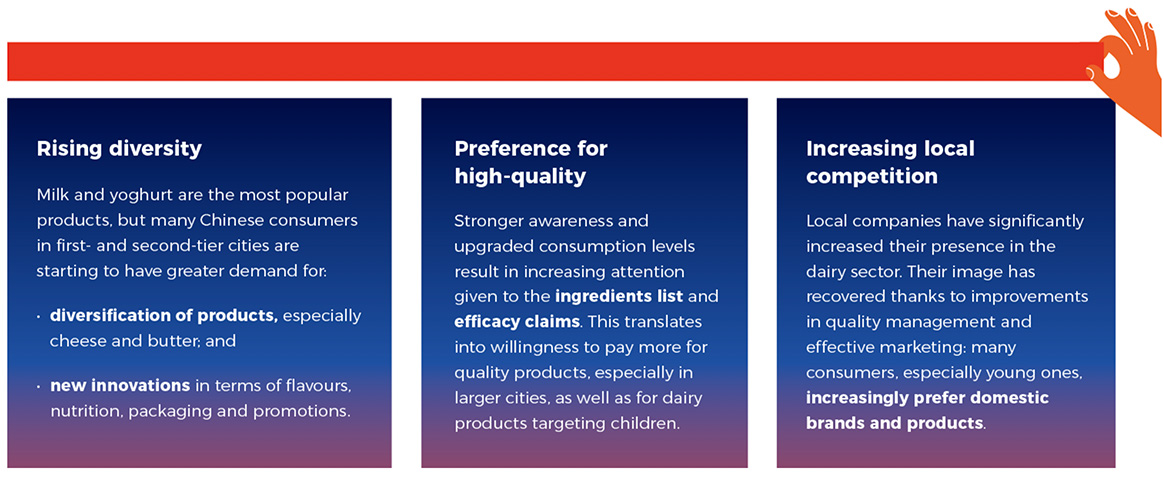
Imported dairy products are generally still viewed as representing higher quality – particularly those from traditional exporting countries. In fact, China’s dairy sector is characterised by strong country-related associations by Chinese consumers. The EU has a solid market share in China’s dairy market: 36 per cent overall – with variations from 85 per cent for yoghurt and 65 per cent for infant formula, to 10 per cent for milk powder and butter (dominated by New Zealand, and to a lesser extent Australia).
There are two main pathways to enter the Chinese market: through general trade or cross-border e-commerce (CBEC). The former is the traditional way to export products to China – but also the most difficult and time-consuming as it requires several approval procedures; the latter is less expensive and faster, though highly competitive and with some limitations. The process for general trade is summarised below.
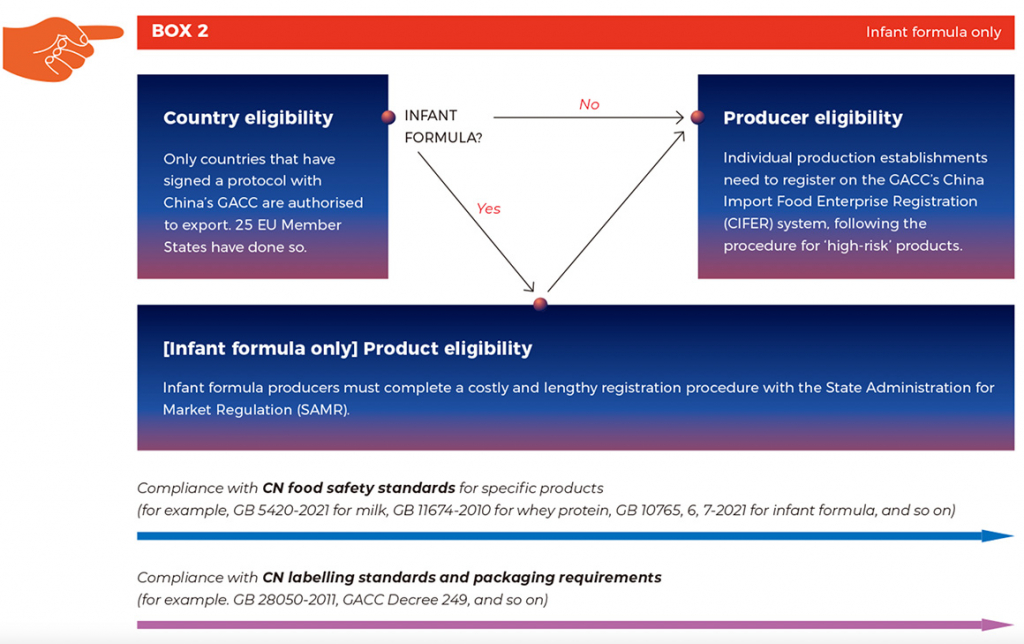
The most challenging aspect is the registration of the production establishment on the GACC’s CIFER system. The process is extremely complicated, takes several months and requires cooperation with the food safety authority in the country where the producer is based. A large amount of documentation must be provided, including on sensitive business information. As of June 2023, EU Member States only had a limited number of dairy production establishments successfully approved.

An additional regulatory layer—and challenge—exists for infant formula producers. Before initiating registration on the CIFER system, producers must first register their products with the SAMR. This process is extremely lengthy and costly, involves the appointment of a domestic responsible agency in China and several rounds of testing and technical review, combined potentially with onsite inspections of the production establishment. This requirement is stipulated in the Administrative Measures of Product Formulation Registration of Infant Formula Milk Powder, which were revised by the SAMR on 10 July 2023 (entering into force in October 2023). The revised measures were released after the publication of the EU SME Centre report and therefore are not included there; but overall, compared with the previous version in force, the revised measures:
European dairy exporters are strongly recommended to get involved in marketing and promotional activities in China, and actively support their local importer/distributor. What can be done largely depends on the stage of the company’s development within the Chinese market, as well as its resources and commitment. But in general, localisation of product design and communication is required, together with efforts to educate consumers.
The EU-China Geographical Indication Agreement also provides leveraging opportunities for EU producers during promotional activities. Among the 96 EU GI products included in the agreement and thus effectively protected in China, 11 are dairy products and 19 more will become protected by 2025.
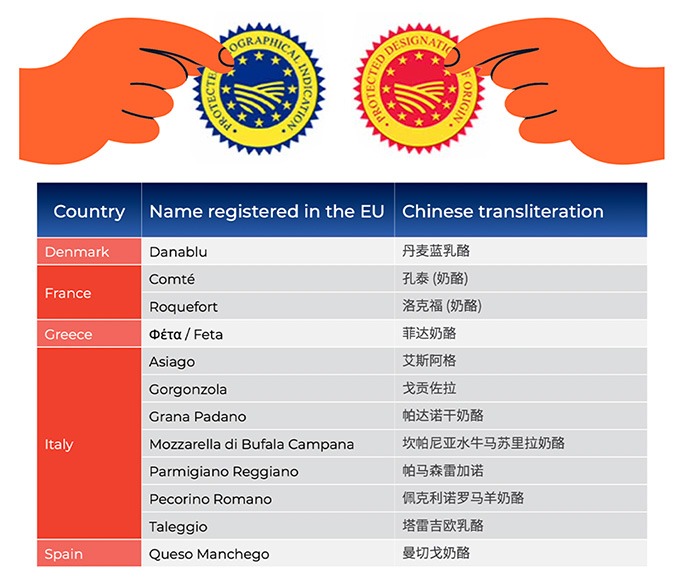
Finally, EU producers should remember that the European Commission, through the Research Executive Agency, co-finances campaigns and events to promote EU farm products worldwide – including dairy products in China, under the slogan “Enjoy, it’s from Europe”.
Read the EU SME Centre’s full report “China’s Dairy Sector: Market, Technical Requirements and Opportunities” here.